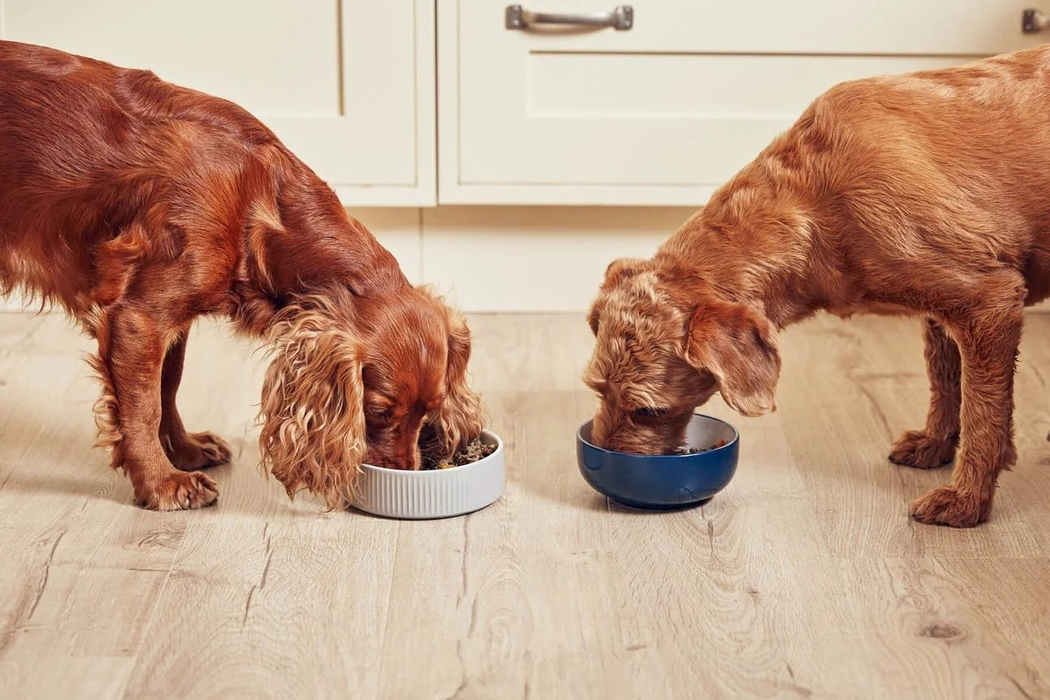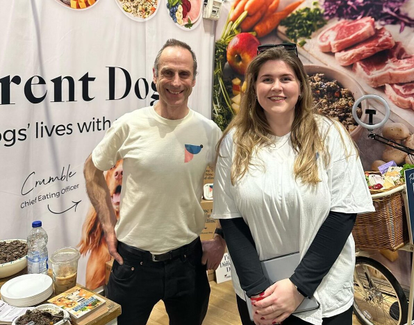



What is grain free dog food?
Over the last 10 or so years we’ve seen many different types of dog food popping up on the shelves such as raw dog food, fresh dog food and grain free dog food. Grain free foods are often marketed as a more natural option for your dog. But what exactly does grain free mean and is going grain free the best food for your pooch?
Grain free foods do not contain any grains such as rice, corn, wheat, or oats which are common ingredients used in wet foods and dry dog food or dry kibble. Many people have steered away from feeding grain to their dogs due to the high starch levels and their links to allergies. They are also viewed as un-natural ingredients by many who try and feed a more ancestral diet – one that wolves would have eaten, the ancestors of our dogs today.
You’ll now find grain free options in all feeding types, from dry dog food to raw dog food to fresh dog food.
Is grain free dog food good for my dog?
More natural dog foods such as raw or freshly cooked can be brilliant grain free foods as these types of foods will not be reliant on a starchy carb during manufacturing.
Fresh and raw dog foods have been created to mimic a more natural way of feeding, with a balance of low carbs, proteins, and healthy fats. Our four-legged friends are descendants of wolves and even though they look quite different these days, their digestive systems are still largely similar. Here at Different Dog, we never use grains or other cheap fillers in our meals; learn more about our recipes here.
Studies have shown that feeding your dog fresh foods with high quality meat and a balance of veg, fruits and seeds can increase their lifespan.
Is grain free dog food bad for my dog?
Unfortunately, not all grain free food is a healthy option for your dog. Keep an eye out for replacement grains such as lentils, peas, white potato, or quinoa. A diet high in these ingredients can still cause excess starch within the body and have even been linked to a heart condition called Dilated Cardiomyopathy.
Our dogs do not have a need for starch in their diet, whether that’s from grains or carbohydrates – the hormones they have in their body help to demonstrate this. Insulin for example, is a hormone that reduces blood sugar by moving it into cells, and it’s the only hormone dogs have that reduces sugar in the blood. On the contrary, dogs have eight hormones for elevating blood sugar meaning they don’t need starch to do this.
Top Tip: want to find out how much starch is in the dog food you are currently feeding? Check the back of the pack and find the Nutritional Analysis which has the guaranteed minimum amounts of nutrients in the food. Find the percentages of protein, fat, moisture, and ash and then add them together. (If ash isn’t listed then use 7% for kibble and 2% for wet food). Subtract that total from 100 and you’ll find the amount of carbohydrates in the food.
100 - (Protein + Fat + Moisture + Ash) = % of Carbohydrates
Grain Free Dog Food vs Grain Dog Food
Grain free dog food can be very similar to grain dog food. Many manufacturers trade out starchy grain for a non-grain starchy carbohydrate, which still isn’t the best for our canine friends. Fresh grain free foods such as raw or freshly cooked dog food that are low in carbohydrates with a balance of natural, whole foods, have been shown through many studies to be the best diet for our dogs.
Healthy grain free dog food recipes
Looking to try out grain free and low carbohydrate dog food? We’ve got a wide range of fresh dog food recipes for you.
Different dog has been created by our team of doggy experts: a vet, a canine nutritionist, and behaviourist, ensuring every ingredient has been included only for the benefit of your dog’s health. With no grain, legumes, preservatives, or colourants, our recipes are crafted and cooked by hand in small batches with locally sourced quality ingredients.

We use 60% British meat or fish with the rest made up from vegetables, fruits, and superfoods. After gently cooking to preserve the goodness, we freeze the food for freshness ready for you to defrost at home. Discover our range of grain free, fresh food for dogs here or to learn more about how it works visit here.
You may also be interested in


